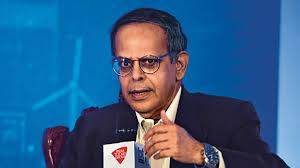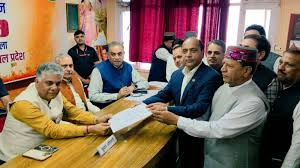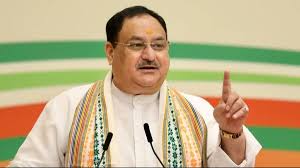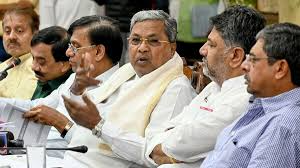Neutral monetary policy stance retains an option for both pausing and cutting rates: RBI MPC Member Saugata Bhattacharya

The Reserve Bank of India’s (RBI) decision to maintain a neutral monetary policy stance has stirred a healthy debate among economists and market observers. Among the most insightful voices is that of Saugata Bhattacharya, a distinguished member of the Monetary Policy Committee (MPC), who recently underscored that the neutral stance is not a signal to halt monetary easing but a deliberate move to keep all options open—whether to pause or further reduce interest rates—based on evolving economic data.
Bhattacharya’s position stands out in the context of the MPC’s recent decision, where he notably dissented from the majority by advocating a smaller rate cut than what was ultimately implemented. His reasoning provides a window into the RBI’s careful balancing act between stimulating growth and maintaining macroeconomic stability.
A Shift to Neutral: What Does It Really Mean?
In its June 2025 policy review, the RBI cut the repo rate by a larger-than-expected 50 basis points, bringing it down to 5.5%. Simultaneously, it altered its stance from “accommodative” to “neutral.” This shift caused some speculation about whether the central bank was signaling an end to its rate-cutting cycle.
However, Bhattacharya clarified that this is a misinterpretation. A neutral stance is best understood as policy flexibility. It means the RBI is neither committing to rate hikes nor to further cuts. Instead, it is positioning itself to respond swiftly and appropriately to future economic developments.
In an interview following the decision, Bhattacharya stated:
“A neutral stance gives us the leeway to pause, cut, or even raise rates, depending on incoming data. It’s not a signal of withdrawal but a recognition that uncertainty remains high.”
Dissenting Voice: Why Bhattacharya Preferred a 25bps Cut
While the majority of the MPC voted for a 50bps reduction, Bhattacharya argued in favor of a more modest 25bps cut. His rationale was based on the idea of measured easing—allowing past rate cuts to transmit through the economy before delivering additional stimulus.
Bhattacharya expressed concern that a large cut might exhaust policy space too soon. With global economic indicators still volatile, including oil prices and geopolitical tensions, he argued it would be prudent to preserve some room for future action.
He also noted that the full effects of previous rate reductions are still playing out. For many borrowers, particularly small and medium enterprises (SMEs) and households with long-term loans, it takes months for changes in the repo rate to translate into reduced borrowing costs. From this perspective, a slower pace of easing allows for better assessment of outcomes before proceeding further.
Understanding the Broader Context
The June policy decision was the third cut in less than six months, totaling 100bps in reductions. It came at a time when economic growth has shown signs of deceleration, particularly in private consumption and rural demand. Meanwhile, inflation has remained broadly within the RBI’s comfort zone, creating room for policy action.
The monetary policy minutes reflect a cautious optimism. Most members agreed that growth needed a boost but differed on how aggressively to proceed. Bhattacharya’s stance injects a note of caution into the policy narrative, suggesting that over-correction could have unintended consequences, such as asset price bubbles or misallocation of credit.
Real Economy Impact: Transmission Challenges Remain
Bhattacharya also highlighted the persistent issue of monetary transmission. In theory, lower policy rates should result in cheaper loans. In practice, banks and financial institutions are slow to pass on the benefits to consumers.
He emphasized that while the RBI has taken several steps to enhance liquidity and guide rates lower, structural issues in the banking sector, such as elevated risk premiums and balance sheet constraints, continue to impede full transmission.
Until these bottlenecks are addressed, Bhattacharya believes the central bank must pace its actions in a way that acknowledges the time lag between policy and impact.
Market Reactions and Analyst Views
Financial markets responded positively to the June decision, viewing it as a strong signal of the RBI’s commitment to supporting growth. However, Bhattacharya’s comments serve as a reminder that monetary policy is not a one-way street.
Several analysts have echoed his sentiment, suggesting that while rate cuts are necessary in the current context, too aggressive an approach may limit the central bank’s options in the future. Global uncertainties—ranging from fluctuating commodity prices to monetary tightening by advanced economies—could still pose risks to India’s macroeconomic outlook.
Looking Ahead: A Data-Driven Path
The way forward, according to Bhattacharya, is firmly rooted in data dependency. Future decisions will hinge on how inflation behaves relative to the RBI’s 4% target, how quickly growth revives, and how effectively monetary easing trickles down to the real economy.
He summarized the RBI’s stance as being neither dovish nor hawkish, but instead pragmatic. This approach may appear less bold on the surface but reflects a deeper understanding of India’s economic complexities.
Conclusion
Saugata Bhattacharya’s views bring valuable nuance to the discussion around the RBI’s monetary policy direction. His support for a neutral stance paired with a cautious rate cut reflects a desire to preserve flexibility while remaining supportive of growth.
As India navigates an uncertain global landscape, such a calibrated approach may well prove to be the wisest path. The neutral stance doesn’t rule out further cuts—it simply ensures that any such move is justified, timely, and effective.






